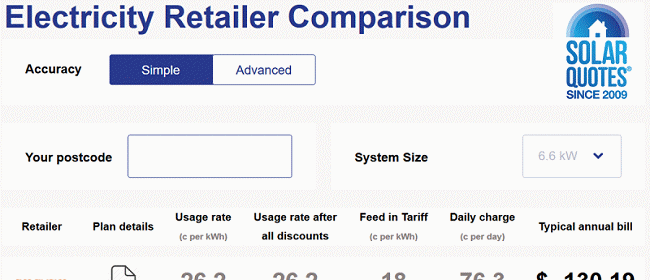Solar Feed In Tariffs In Australia
Last Updated: 2nd Sep 2025
A solar feed-in tariff is the money you’re paid per kilowatt-hour for surplus solar electricity exported from your rooftop solar to the grid.
Feed-in tariffs are often confused with Australia’s ‘solar rebate’. The national solar rebate is a different incentive offering a point-of-sale discount on the price of a new solar power system. It can be worth thousands of dollars (and is still very much alive and kicking).
Feed-in tariffs are also still available across Australia, but the rates are less generous than they used to be. But this doesn’t make solar power any less of a good investment – in fact, it’s quite the opposite, given how the cost of installing solar power has plummeted over the years.
Early feed-in rates were high to encourage the uptake of solar panels, back when solar power systems were 4 to 5 times the price they are now. The incentive worked. The solar industry is now well-established, and prices for Australian solar PV systems are the lowest in the world, thanks to high uptake and efficient installers.
Solar feed-in tariffs have also dropped due to reductions in wholesale electricity pricing during daylight hours – and most of this is thanks to the rooftop solar energy revolution.
Feed-in tariffs are a handy bonus, but the greatest value in owning a solar power system is gained by maximising self-consumption of the electricity it generates.
How Solar Feed-In Tariffs Work
When your rooftop solar panels generate more electricity than your home is using at the time, it isn’t wasted. This surplus energy flows into the mains electricity grid for others to use. Feed-in tariffs are the payment you receive for exporting that energy to the grid.
Solar feed-in tariffs for new rooftop solar have been generally low for the past few years. While there have been ups and downs based on wholesale electricity prices, the general trend has been downwards.
Regardless of the ups and downs in rates, solar’s very strong value proposition will remain.
Some Australian households also still benefit from high feed-in tariffs they obtained in the past; having locked in a higher buyback rate as explained below with what are now legacy programs. But often in those cases, if these solar households upgrade their systems, they lose their “premium” FiT rate.
Solar households with batteries may also be able to receive higher feed-in tariff rates through participation in a VPP (Virtual Power Plant).
Compare Feed-in Tariffs In Your Area
The best and easiest way to find and compare the solar feed-in tariffs currently offered by electricity retailers in your area is to use our electricity plan comparison tool and enter your postcode. But bear in mind the highest rates don’t always represent the best overall plan – I explain this more below.
Current Feed-in Tariff Rates By Australian State & Territory
The range in current solar feed-in tariffs for each state and territory in Australia are shown on the pages below.
Click on the state or territory to be taken to a page with more detailed information on that region’s current buyback rate and historical solar feed-in tariff information.
Feed-in tariff rates and detailed information for:
- Queensland (QLD)
- New South Wales (NSW)
- Australian Capital Territory (ACT)
- Victoria (VIC)
- Tasmania (TAS)
- South Australia (SA)
- Western Australia (WA)
- Northern Territory (NT)
Feed-in Tariff Rates Used To Be High
Around 2010, when buying rooftop solar power in Australia was vastly more expensive than it is now, feed-in tariffs were much more generous, and some state/territory programs locked in a timeframe for how long these rates would apply to those who signed up.
As a result, there are some households in Queensland and South Australia who will receive 44 cents buyback rate until 2028, and some in the ACT who will receive a rate 47.5 cents until 2031. To find details on these legacy feed-in tariffs, click on the state or territory above.
Highest Feed-in Tariff Rate Is Not Necessarily The Best
In NSW, Victoria, South East Queensland, South Australia and the ACT, current feed-in tariffs are only what electricity retailers offer and can range from nothing up to 12 cents.
But the highest feed-in tariff is not necessarily the best and may not result in the lowest electricity bills. What you should be looking for is an electricity plan offering a balance of generous feed-in-tariffs, low usage tariffs and low daily charges. Click here to compare feed in tariffs and energy plans Australian electricity retailers offer solar owners.
How Can I Tell What My Current Feed-in Tariff Rate Is?
Rates may and do vary between electricity retailers. If you are not sure what the feed-in tariff you are receiving is, it should be on your electricity bill. If you can’t find it, you’re likely not receiving one.
Help! My Electricity Bill Says I’m Not Getting Any Feed-in Tariff!
If you have rooftop solar panels and you’re not receiving any feed-in tariff, it probably means your electricity plan doesn’t have one. This can be fixed either by changing your energy plan or by changing your electricity retailer.
Some people have failed to receive a solar feed-in tariff because their solar installer failed to complete the paperwork correctly. In the unlikely event this happens, contact your installer, as they have a legal obligation to get it right. But if they’re no longer around, you may need to hire another installer to check your system and complete the paperwork.
